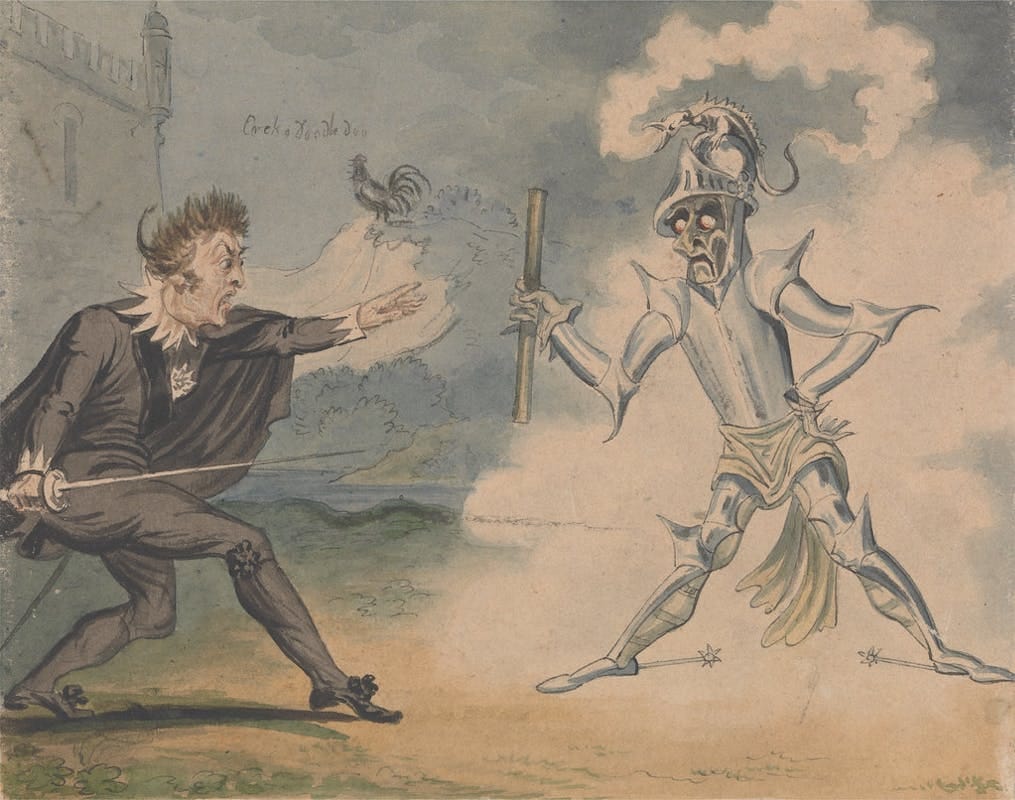Good Monday, Gamer!
“Keep your eyes on the finish line and not on the ghouls around you!” — Rihanna, Party Caller
It was a week of noodling—some board games at home (Dark Tower and Arkham Horror), some late-winter vibes, and the slow march toward Spring Break here in KC. That means disruptions to the game schedules! I sorted and archived GM notes from a handful of recent and not-so-recent games: The Black Sword Hack, Lifted: Indomitable, an old Legacy: Life Among the Ruins run, and Cold City. All of these are games that build setting and premise as part of the play. No giant lore dumps. No lore accountants. Just creative momentum and collaboration. Each session, a shared construction site. Each player bought in because their input shapes the world.
And yet… as I closed those folders and tucked them away, I had a twinge of sadness.
We never got to some of those threads.
What were the Overlords up to in that remote tower?
Who’s been tampering with The Wyvern’s memories?
What’s really in the basement vault B-7?
These kinds of games generate so much material—player-driven, high-potential, weird little seeds that never fully bloom. And even though we wrapped each game with satisfaction, I find myself wistfully thinking:
I wish we could have stayed a little longer.
A story of Two Quinns
If you haven’t acquired Griot, Quinn Murphy’s zine from Thoughtcrime Games, stop what you’re doing and snag it. This isn’t just another indie anthology—it’s an invitation to explore identity, culture, voice, and power through the lens of TTRPGs. Griot is a unique body of work by Black TTRPG designers. It’s a work that knows the weight of history but insists on joy anyway.
This brings me to the other Quinns’ recent YouTube dive on Jorune. Jorune is one of those oddball, ahead-of-its-time RPG settings that lives in the ancient corners of our collective hobby memory. Quinn & Co. engage with Jorune—its ambition, alien elegance, and wild ideas about culture and immersion—at least for a season. The first episode is public and making me nostalgic, but I also remember what a beast the system mechanics are! Jorune (pronounced “jor-OON”) is a science fantasy tabletop RPG first published in the 1980s. It’s best known for its richly alien worldbuilding, where players explore the planet of Jorune—a place colonized by humans long ago but now filled with strange creatures, lost technology, and a complex blend of native species and human descendants. You’re caught in the cultural and political friction between different races, all of whom are trying to rediscover or reshape their relationship to powerful ancient technologies and psychic energy called Isho. The game stands out for its original vocabulary (it uses a lot of invented terms), deeply immersive setting, and a focus on exploration and diplomacy as much as combat.
Griot and Jorune aren’t just touchpoints. They’re threads in a larger conversation about who we are when we play and how the stories we tell echo through more than just our dice rolls.
Mad Dice is Going Live
I'm thrilled to share that Mad Dice, my new minimalist dice-rolling web app, is going live in the next few days at www.mad-dice.com! 🎉 Mad Dice is built to be fast, clean, and easy to use from the web. It’s accessible to everyone without requiring logins or accounts. Just click in, join a room, roll some dice, and chat (soon!) with your table. Although membership has its bennies!!
Catch ya next week!






Would love to get in a Legacy run sometime…
Looking forward to Invisible Sun!
Nice article man! I will search for those games right now!